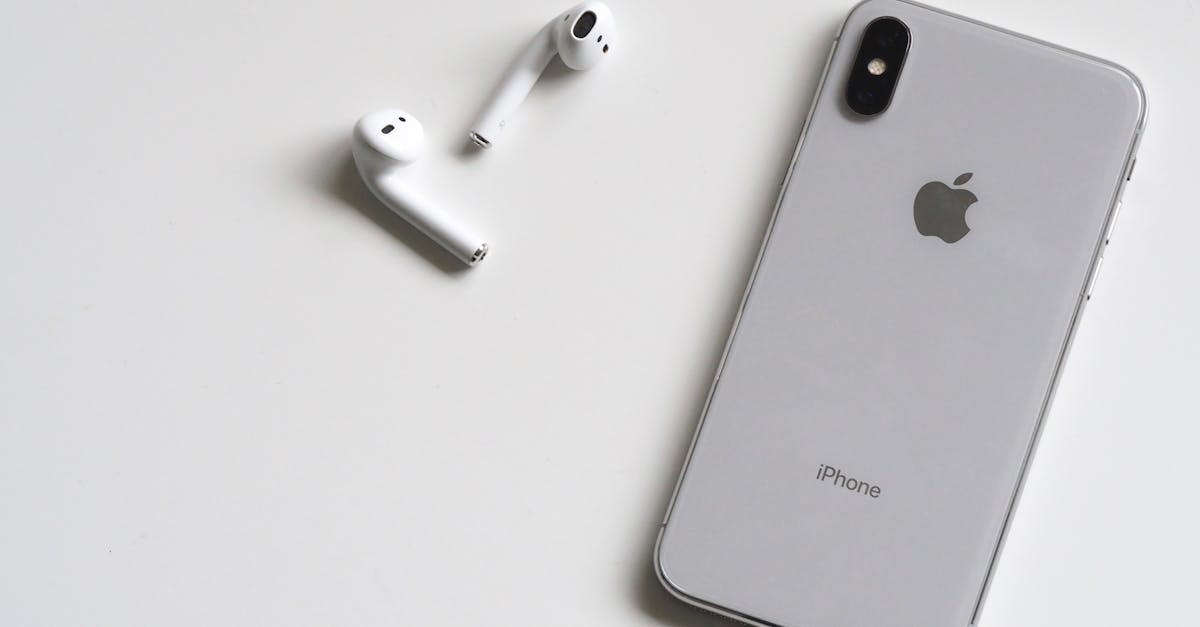Lost your AirPods again? You’re not alone. Every day, countless people engage in a frantic search for those elusive little earbuds, often resembling a scene from a slapstick comedy. But fear not! If you’ve got an iPhone, you might just have a secret weapon tucked away in your pocket.
Imagine this: you’re at the coffee shop, sipping your favorite brew, and suddenly you realize your AirPods have vanished into thin air. Instead of launching a full-blown treasure hunt, your iPhone can help you track them down faster than you can say “where did I leave them?” With a few taps, you can unleash the power of technology and bring those runaway earbuds back home. So, let’s dive into how you can turn your iPhone into a trusty sidekick in the quest for your lost AirPods.
Table of Contents
ToggleOverview of AirPods and iPhone Compatibility
AirPods seamlessly connect with iPhones, enhancing the audio experience. Compatibility starts with the Bluetooth functionality, enabling easy pairing between the devices. Apple designed AirPods to work effortlessly with iOS devices, ensuring users enjoy uninterrupted sound.
All current AirPods models, including AirPods Pro and AirPods Max, support iPhones running iOS 10 or later. Users should check their device’s iOS version in Settings under General and About. Specific features like Spatial Audio and automatic switching enhance usability but require the latest iOS releases.
Pairing AirPods with an iPhone is a simple process. Opening the AirPods case near the iPhone prompts a connection dialog. Tapping Connect establishes the link, making it quick and user-friendly. Notifications about battery levels and connection status appear on the iPhone screen, providing real-time information.
Locate My iPhone integrates with AirPods, making finding lost earbuds easy. When AirPods are nearby, users can play a sound to locate them. This feature, however, requires both devices to be linked within the Find My app. If AirPods are out of range, the app shows their last known location.
Managing settings through the iPhone enhances the AirPods experience. Adjusting volume, enabling noise cancellation, and changing controls happen directly from the device. Users appreciate this level of control, creating a personalized listening experience.
Compatibility between AirPods and iPhone exemplifies Apple’s commitment to user-friendly technology. Frequent updates to both hardware and software ensure continuous improvements in functionality. Overall, AirPods and iPhones work together to provide a cohesive audio solution.
How to Set Up AirPods with Your iPhone
Setting up AirPods with an iPhone is straightforward. The seamless process enhances the audio experience through Bluetooth.
Connecting AirPods to Your iPhone
Connecting AirPods to an iPhone begins with opening the charging case. Users should ensure Bluetooth is enabled on the iPhone. A prompt appears on the iPhone screen, showing the AirPods image. Tapping “Connect” initiates the pairing process. Users can then follow the on-screen instructions to finalize the connection. Once paired, AirPods automatically connect to the iPhone whenever they are in close proximity. This feature makes switching between devices easy, enhancing usability for tasks like listening to music or making calls.
Troubleshooting Connection Issues
When connection issues arise, several solutions exist. First, ensuring Bluetooth is enabled is crucial for connectivity. Restarting both the iPhone and AirPods often resolves basic disconnection problems. Users can also forget the AirPods in Bluetooth settings and reconnect them. Checking for software updates on the iPhone may improve compatibility. If problems persist, resetting the AirPods can resolve deeper issues. Pressing the setup button on the back of the case until the LED flashes amber and then white initiates the reset process. These steps help restore reliable connectivity.
Using Find My App to Locate Your AirPods
Tracking down lost AirPods becomes easier with the Find My app on an iPhone. This feature works smoothly to help locate misplaced earbuds.
Enabling Location Services
Location Services must be enabled for the Find My app to function properly. Users navigate to “Settings” and select “Privacy.” From there, they find “Location Services” and turn it on.
The Find My app requires access to pinpoint AirPods accurately. Without this setting, locating missing earbuds may yield limited results. Users also should ensure that the Find My app is granted permission to access location data.
Steps to Find Your AirPods
Finding AirPods through the Find My app involves a few simple steps. First, users open the Find My app and select the “Devices” tab.
Next, they locate their AirPods on the list of connected devices. If nearby, tapping “Play Sound” causes the AirPods to emit a noise to help in locating them.
If the AirPods are out of range, the app displays their last known location on a map. This provides essential guidance for users searching in that vicinity. Following these steps makes retrieving lost AirPods efficient and straightforward.
Limitations When Finding AirPods
Finding AirPods using an iPhone comes with specific limitations that users should understand. Knowing these restrictions can enhance the recovery process for lost earbuds.
Range and Connection Requirements
AirPods only remain detectable within a short range. The effective range typically spans approximately 30 feet (9 meters) from the iPhone. Users must keep both devices within this distance for the Find My app to function effectively. Beyond this range, the tracking capability becomes limited. Bluetooth connectivity plays a critical role, and any disruption can impede the detection process. Thus, maintaining a clear line of sight ensures optimal performance for locating AirPods.
Factors That Affect Tracking Accuracy
Several factors influence the accuracy of locating AirPods. First, obstructions such as walls or furniture can hinder signals between AirPods and the iPhone. Interference from other electronic devices, like Wi-Fi routers or microwaves, also poses challenges. Battery levels significantly impact tracking efficiency; drained AirPods may not communicate effectively with the iPhone. Additionally, the user’s location and whether they’ve enabled Location Services directly affect tracking abilities. Keeping these factors in mind allows for a better understanding of the limitations associated with finding lost AirPods.
Conclusion
Finding lost AirPods with an iPhone is a straightforward process that can save users time and frustration. By leveraging the Find My app and its features users can quickly locate their earbuds whether they’re nearby or out of range.
The seamless integration between AirPods and iPhones enhances the audio experience while offering convenient management options directly from the device. Understanding the limitations and factors affecting tracking accuracy can further improve the chances of a successful retrieval.
With these tools at their disposal Apple users can feel confident in their ability to keep track of their AirPods and enjoy their favorite audio content without interruption.



